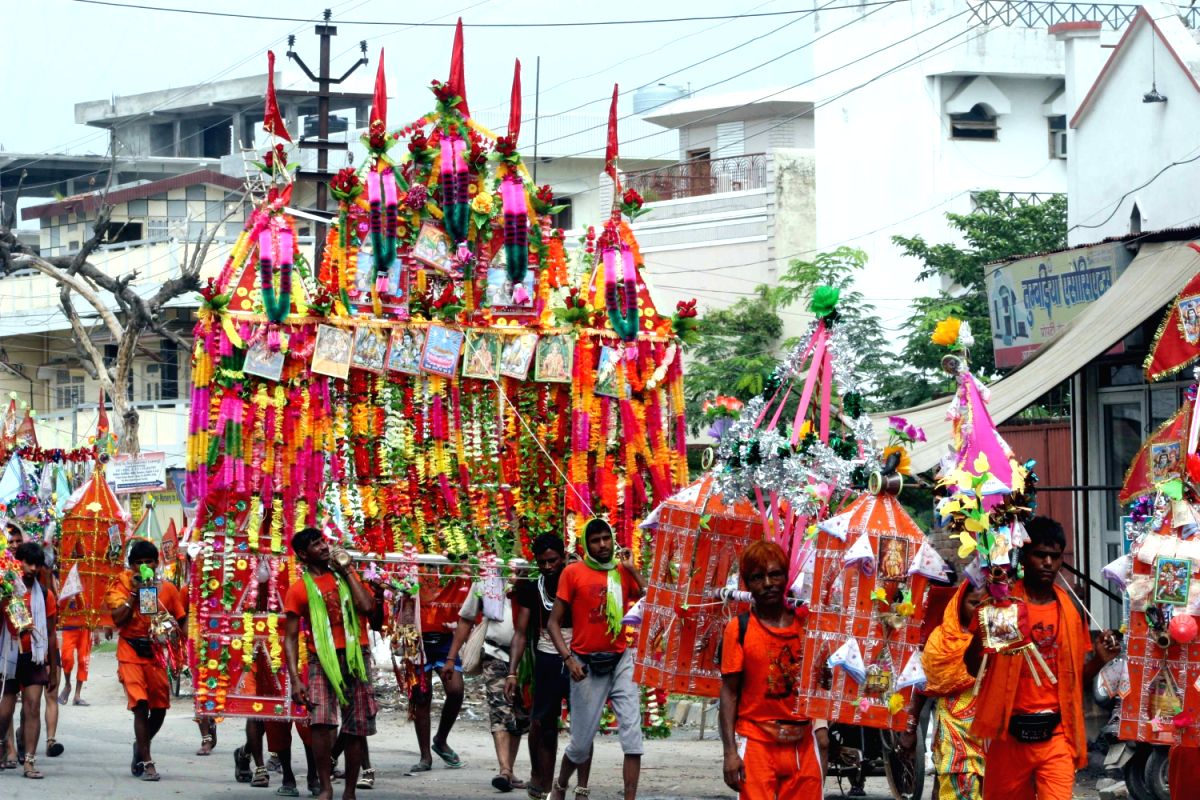The Kanwar Yatra, a significant annual pilgrimage for Shiva devotees, commences today, marking the first day of the Hindu month of Shravan. This year, more than three crore devotees, known as kanwariyas, are expected to participate.
A Time-Honored Tradition
The kanwariyas transport sacred Ganga water to their hometowns to offer to Lord Shiva. The water is typically collected from Haridwar in Uttarakhand or Varanasi in Uttar Pradesh. Participants, primarily men dressed in saffron, carry flags featuring Shiva and pots made of plastic, brass, or steel filled with the holy water.
Historical Significance and Rising Popularity
The Kanwar Yatra has seen a surge in popularity over the years. According to Hindu tradition, Parshuram, an avatar of Lord Vishnu and a devoted follower of Shiva, initiated the first Kanwar procession. In 2022, approximately four crore people collected Ganga water in Haridwar alone. The pilgrimage, which saw over 46 lakh vehicles arriving in the city last year, often leads to significant traffic congestion, particularly due to the presence of dak kanwariyas who travel non-stop on bikes or vehicles.
Challenges and Safety Concerns
The pilgrimage is not without its risks. Last year, 13 devotees lost their lives, with causes ranging from drowning to accidents. Despite these dangers, the yatra continues to attract a growing number of participants each year.
Changing Demographics
The composition of kanwariyas has evolved significantly since the late 1980s, when only a few thousand people participated. Today, the majority of kanwariyas are young men from low-income backgrounds, working in informal sectors such as driving, labor, and security. For many, the yatra offers an escape from the uncertainties of daily life and a chance to demonstrate their physical strength and resourcefulness.
Economic Impact
The Kanwar Yatra also provides a significant economic boost to the regions it passes through. Thousands of eateries, fruit vendors, clothes sellers, and other businesses benefit from the influx of pilgrims. On average, a kanwariya spends between Rs 3,000 to 4,000 on the pilgrimage, contributing to local economies.
Improved Facilities
Over the years, the facilities available to kanwariyas have improved, making the journey more comfortable. Roadside camps, eateries, and rest stops have increased in number, providing much-needed relief to pilgrims traveling long distances, often on foot.
Sonu Pal, a dhaba owner on National Highway 58, noted that his business doubles during the yatra. “We usually earn Rs 2 to 2.5 lakh a month on normal days. But the heavy influx of kanwariyas during the yatra allows us to earn much more,” he said.
Government Preparations
State governments have made extensive preparations to ensure the comfort and safety of the pilgrims. This year’s yatra promises to be another massive event, reflecting the deep devotion and cultural significance of this ancient pilgrimage.









